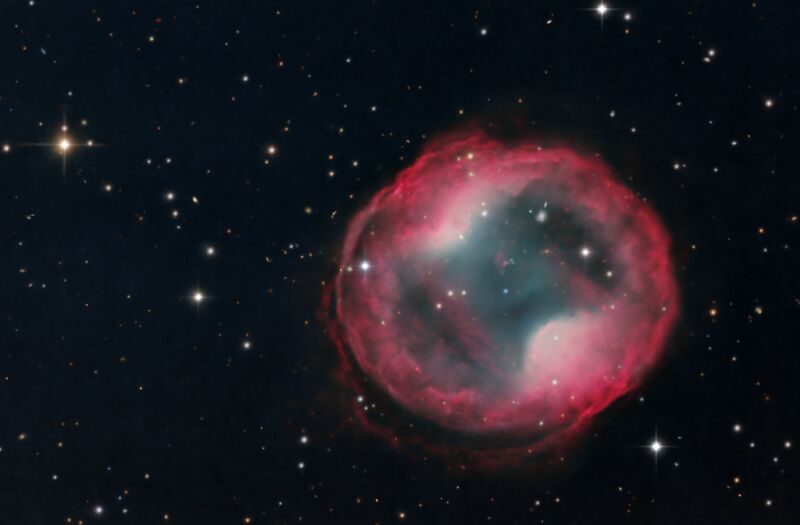Bill McLaughlin
Good morning. It is November 7, and today’s photo brings the “Headphones nebula” into brilliant clarity. The origin of this name seems rather obvious, no?
This is a planetary nebula, and I well remember studying these as an astronomy major decades ago. Why? Because the name is so damn confusing. Planetary nebula are formed when dying stars—including our own Sun one day—expand and form a glowing shell of ionized gas. They were given the name “planetary” nebula because, when first observed by astronomers about 250 years ago through rudimentary telescopes, they looked somewhat like planets.
The name stuck.
The formal name of the Headphones Nebula is Jones-Emberson 1, which was discovered in 1939 by Rebecca Jones and Richard Emberson. The central star in the image is a “white dwarf” star that is actually blue. Because, astronomy.
Amateur astronomer Bill McLaughlin told me he captured this image with his 14-inch Planewave CDK telescope from SkiesAway remote observatory in California in March and April 2023. The total exposure time was 19.25 hours, and the resulting image was composed from 127 sub-exposures.
“In this case the inspiration was an Astrobin image of the day taken earlier this year, albeit by a team of imagers using a one-meter professional-level scope,” he said. “Still, although I was doing this by myself and with a good but much more modest system, I liked the object so much I decided to give it a try. Of course, my result doesn’t match that from a professional level system, but overall, I was pretty happy with the result.”
As well he should be.
Source: Bill McLaughlin.
Do you want to submit a photo for the Daily Telescope? Reach out and say hello.

Dr. Thomas Hughes is a UK-based scientist and science communicator who makes complex topics accessible to readers. His articles explore breakthroughs in various scientific disciplines, from space exploration to cutting-edge research.








